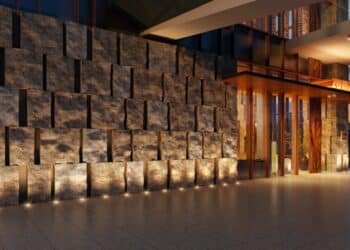Catering News grills Melissa Yarman, regional manager at CKP Hospitality Consultants on the latest trends, opportunities and challenge in kitchen design.

What are the latest trends in kitchen design?
We believe that every square metre of real estate counts, therefore we are advocates of compact designs and giving back when necessary. Having said that, designing a kitchen is not just designing a kitchen anymore – it is designing a space that could potentially be used as a revenue generating area with some good old fashioned TLC, and clever and creative designs. In terms of back-of-house, the trends are flexible designs, bringing the BOH to FOH, for example with designs that allow every space to be revenue generating. This could mean creating a chef’s table or tasting room in the BOH main production kitchen or an employee cafeteria for menu sampling. In the front of house, one trend is micro-concepts, which enable the operator the flexibility to handle service during peak and off-peak seasons.
What do you need to know before planning a kitchen?
Well that depends on the project. For instance, for a renovation or retrofit project, we would typically begin with understanding the existing operational structure, understanding new operational expectations, and review of existing architectural, structural and engineering constraints. For a new-build, I believe it is a bit more straightforward. It would include understanding operational requirements, number and type of F&B outlets, deducing meal counts, establishing kitchen area requirements, operational connectivity and so on.
Which stakeholders do you consult with before planning a kitchen?
We consult with the operator, the arch consultant, MEP, the structural consultant, the logistics/ VT consultant, the interior consultant and the lighting consultant.
What are the most important aspects of good kitchen design?
It’s important to specify well-represented products, which offer great after-sales support. You also must work together with the operator to come up with design strategies and a concept intent that suits the expectations, so it’s important not to work in isolation. You also must understand the total meal counts and kitchen square metre availability, as this impacts kitchen equipment selection. Understanding the budget allocated by the client is also key for the kitchen equipment supply and installation, and you must have adequate coordination of the kitchen equipment installation requirements during the design phase with other trades of design, such as arch, structures and MEP.
What is your main priority when sourcing kitchen equipment?
The priorities are: health and safety features and compliance to international standards or local codes; after-sales support; and energy efficiency.
How has commercial kitchen equipment evolved over the past 10 years?
Equipment is now much more intelligent with increased precision because of improved controls and technological advancements, such as improved PCB controls.
What is the most important piece of kitchen equipment?
Combi steamers!
What challenges do you often face when it comes to building and installation?
Owners not seeing the advantages of giving priority or time for the kitchen design phases. In most cases, interior design and architecture is given priority and attention, until they hit the kitchen spaces. Also, the appointment of the kitchen design contract is in most cases too late in the design and once appointed, the design process is given extremely short timelines. Another challenge is that clients believe that it is simpler to place the kitchen equipment supply and install contract under the main contractor’s package. Appointing the main contract as a lump sum results in a disconnect between the kitchen consultant from the KEC. This reduces interaction and control and eliminates leveraging between the contractors. The KEC will be at the mercy of the main con and therefore, incapable of ensuring quality of execution.
To what extent can using the right equipment overcome these challenges?
I believe selecting the right equipment benefits the installation and operations phase more than anything. I categorise the equipment selection into two criteria: the warranty it provides and the people and company that represent it. Selecting the right equipment ensures a certain level of technical design as well as after-sales support, which attracts the right type of companies for representation.



































































